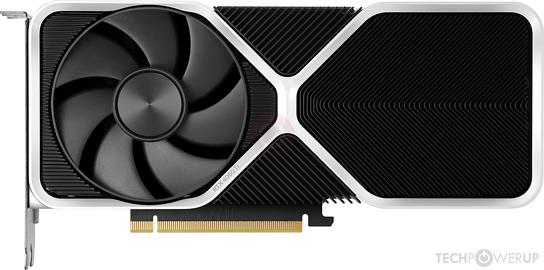You're the one skewing again and defending a company who loves to screw you more and more each generation... I've been Gaming and using GPUs since the early 2000s and yes Nvidia has become a scummy company with misleading marketing and terrible practices.
Smaller process nodes means more chips per wafer and more transistors on it. Don't you think that Intel, TSMC, IBM and GloFo didn't spend a lot of money on their process nodes and could also have some terrible yields back then?!!
Even with inflation the 5080 is a ripoff... 84SM is literally the specs of a Full GA102 aka 3090 Ti (in 2022) and almost a 3090 (82SM) in 2020, but on a Samsung 8nm node compared to a TSMC 4nm node (which was already the case of RTX 40s even though Blackwell was originally supposed to be made on TSMC 3nm but since AMD canceled NAVI 41 they changed their plans)... 3090/Ti had 28.3B Transistors whereas the 5080 has 45.6B Transistors but the 3090/Ti also had a 384-bit bus and 24GB VRAM which the 5080 clearly doesn't even have, and is only half a 5090 specs wise... what a joke.
The GTX 1070/1080/1080 Ti had plenty of VRAM for back then, but nowadays Nvidia are barely giving the minimum possible. They added more L2 Cache on RTX 4060/Ti pretending that it was enough to bypass the 8GB limit but they also cut the memory bus of their GPUs to 128-bit etc. That's just wrong, more L2 Cache can help but will not replace the lack of VRAM.
Think whatever you want man, I have a 4090 so I'm not an Nvidia hater, but between the huge MSRP increases, false advertising (VRAM vs L2 Cache, Crippled Memory Buses, FG/MFG being "free performance" omitting latency increase and artifacts/smearing/ghosting/etc.), selling GPUs with missing ROPs, melting connectors even 4 years later, 600W GPUs (whey they used to be 250W back then), Drivers bricking GPUs and being unstable (with some studios even recommending older drivers), etc. If you think Nvidia really care about you then you're delusional.
I'm not defending the company because I want to, I'm defending the company because theres no logic here. The CUDA core translation is completely arbitrary as I explained above.
Smaller process nodes means more chips per wafer and more transistors on it. Don't you think that Intel, TSMC, IBM and GloFo didn't spend a lot of money on their process nodes and could also have some terrible yields back then?!!
TSMC 4N is much more expensive. Don't worry, AMD is prob paying more than NVIDIA is due to contracting via 357mm2 Navi48 dies. Relative to the 378mm2 GB203 (direct comparison on NVIDIA side)
I'll agree with you that NVIDIA is overpriced per chip sold, but my argument was targeted at legacy SKUs. NVIDIA hasn't really changed their game plan since the GTX600 series..
GTX680 was the first x80 series that diverged from the "flagship" die.
Even with inflation the 5080 is a ripoff... 84SM is literally the specs of a Full GA102 aka 3090 Ti (in 2022) and almost a 3090 (82SM) in 2020, but on a Samsung 8nm node compared to a TSMC 4nm node
Samsung 8 was significantly cheaper and the GA102 was 628mm2.. This is a completely different tier of GPU and shows how much more advanced 4N is. NVIDIA was able to cram 60 more SM units into AD102 (4090 was cut down), while being smaller than GA102. AD102 is 609mm2.
The current flagship die/nodes scale better per die size vs SM count, but also draw 400-600W power as the trade off.. 5080 runs around 100W lower power than 3090 TI on average via 400mm2 GB203 die.
84 SM vs 84 SM.
5080 is clocked higher.
3090/Ti had 28.3B Transistors whereas the 5080 has 45.6B Transistors but the 3090/Ti also had a 384-bit bus and 24GB VRAM which the 5080 clearly doesn't even have, and is only half a 5090 specs wise... what a joke.
The bit bus is irrelevant and has no impact on performance in this situation. Bandwidth does. 5080 is slightly lower (960 GB/s), but has a bigger cache pool, which will significantly offset this.
24GB of VRAM is a by product of using double stacked 1GB chips on each side of the PCB. 12+12 chips.
It's funny you mention this since the 5080 can actually be bumped up to 3GB dies in a year or so... ending at the same 24GB spec. (or 32GB with 4GB dies).
Plausible max spec "could be" 48 or 64GB if they double stack a PCB, but it wont happen for obvious reasons.
The GTX 1070/1080/1080 Ti had plenty of VRAM for back then, but nowadays Nvidia are barely giving the minimum possible. They added more L2 Cache on RTX 4060/Ti pretending that it was enough to bypass the 8GB limit but they also cut the memory bus of their GPUs to 128-bit etc. That's just wrong, more L2 Cache can help but will not replace the lack of VRAM.
The goal is to revise the product stack in a year or two once 3/4 GB dies end up mass production and cheaper.
Nvidia has been stagnating VRAM since the 20 series.. This isn't new... There was a rumored 3070 16GB but it got scrapped. Same with 20GB 3080, but they launched a 12GB 3080 instead.
I personally believe the 36SM 5060 TI will be a terrible value in both 8/16GB configs. Pretty sure they want to transition this card to 12GB durring a refresh.
600W GPUs (whey they used to be 250W back then)
Yet, you're complaining about a 400mm2 GB203 5080 only having 84 SM?
I don't think you quite understand what you're arguing... especially using a flagship 128(4090) /144 (AD102) or 170(5090) /192 (GB202) SM die as some kind of reference for "getting screwed".
If you think Nvidia really care about you then you're delusional.
I think Nvidia is cancer incarnate. You're completing missing the point lol









